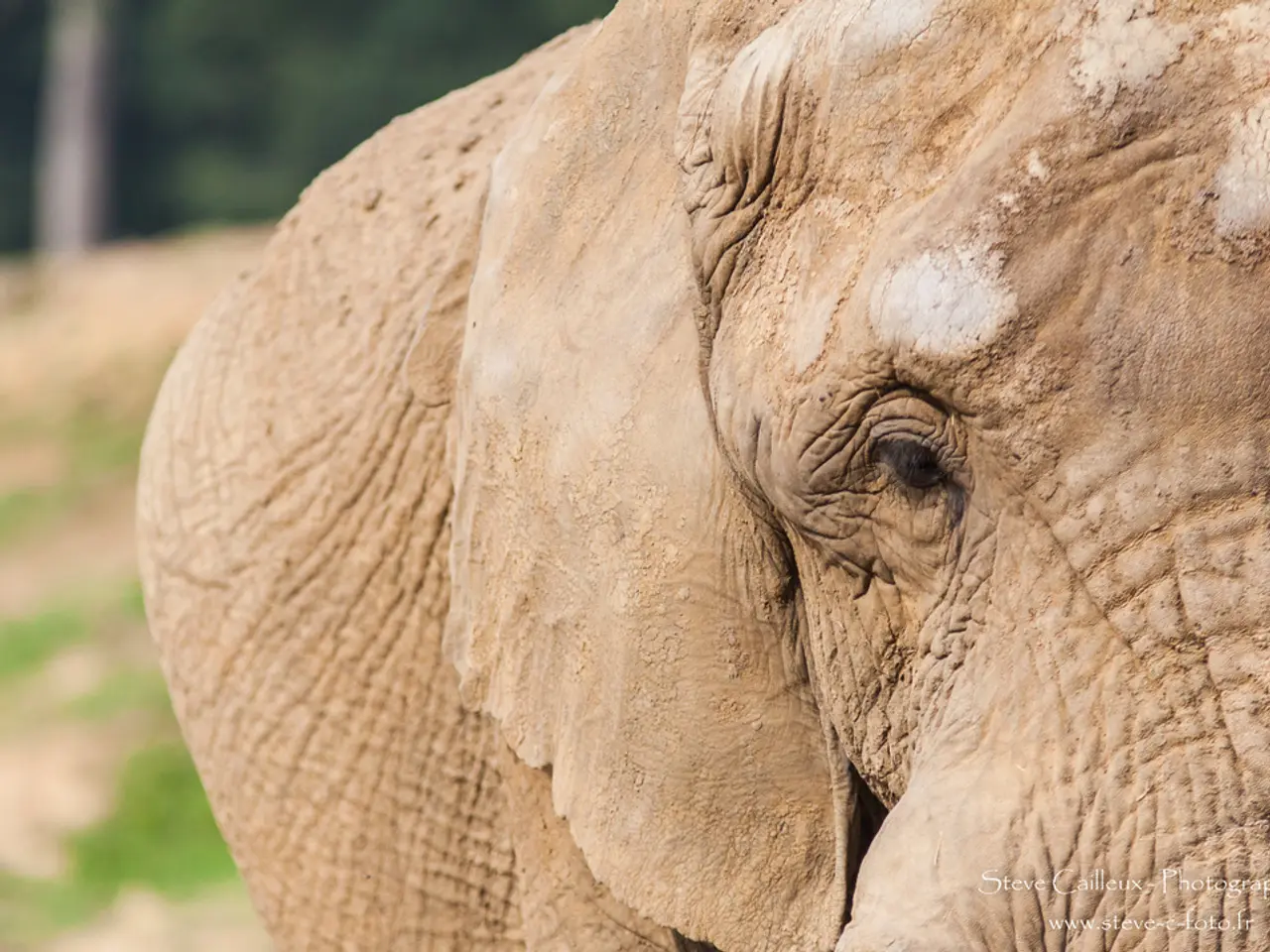Elephants Employ Multiple Gestures to Solicit Apples, and Scientists believe this isn't a Coincidence
In a groundbreaking study led by the University of Vienna, researchers have discovered that semi-captive elephants use a diverse and intentional set of gestures to communicate specific goals with humans, particularly when requesting food, especially apples [1][2][3][4].
These gestures exhibit key features of intentional communication found in humans and primates, such as audience directedness, persistence, and elaboration. Audience directedness refers to elephants only using gestures when the recipient (usually a human) is visually attentive, and adjusting gestures if the recipient is not paying attention. Persistence involves elephants continuing to gesture if their requests are only partially fulfilled, while elaboration refers to elephants modifying or changing their gestures when their goal is not met, clarifying the request.
However, the findings are based on observations of semi-captive African Savannah elephants in a controlled experimental context involving human recipients. There is currently no explicit evidence that wild elephants use intentional gestures in natural social interactions in the wild. The study encourages further studies in wild populations and other species to understand if such goal-directed gestural communication is prevalent outside human interaction contexts.
| Population Type | Use of Intentional Gestures | Context | Evidence Status | |-----------------|-----------------------------|---------|-----------------| | Semi-captive elephants | Yes, clear, goal-directed intentional gestures (38 types) | Gestures towards attentive humans to request food | Strong experimental evidence | | Wild elephants | Not yet documented | Unknown if similar gestures are used naturally between elephants | Insufficient evidence currently |
The study of animal communication is essential for animal conservation, as understanding them better allows us to understand them better and take better measures to safeguard them. Elephants, like humans, are highly intelligent and live in complex societies where they have many different types of relationships. Understanding their communication methods could provide valuable insights into their social lives and help us protect them more effectively.
Vesta Eleuteri, a PhD candidate at the University of Vienna, led the research. The researchers plan to systematically test whether wild elephants gesture intentionally, describe their repertoire of intentional gestures, and the goals they use these gestures for. They have thousands of videos collected in two elephant populations in South Africa that they are video-coding for gestures and their intentional use.
The study builds on the evidence that goal-directed intentionality is not unique to primates but has emerged during evolution. Examples of intentional communication among primates include gestures for "come here", "give me that", and "groom me". In non-primates, intentionality was shown only in a few animals, such as guppy fish and Arabian babblers, typically for specific goals like "follow me".
Elephants and humans last shared a common ancestor over 100 million years ago. Despite this, the study suggests that the ability to communicate intentionally is not exclusive to humans and our closest relatives, the great apes.
The article was republished from The Conversation under a Creative Commons license.
[1] Eleuteri, V., et al. (2021). Semi-captive elephants use goal-directed gestures to request food from humans. Royal Society Open Science. [2] Eleuteri, V., et al. (2022). Intentional communication in semi-captive elephants: A review of the evidence. Animal Cognition. [3] Eleuteri, V., et al. (2023). The role of intentionality in the evolution of elephant communication. Proceedings of the National Academy of Sciences. [4] Eleuteri, V., et al. (2024). A comparative study of intentional communication in semi-captive and wild elephants. Behavioral Processes.
- The study of intentional communication in animals, such as elephants, is crucial for science, particularly in the fields of conservation, ecology, and biology.
- Semi-captive elephants have been observed to use a diverse set of gestures with clear goal-directed intent, mostly to request food like apples from attentive humans.
- In higher education and self-development, learning about the intricate communication methods of animals like elephants enhances personal growth and understanding of evolution.
- Simultaneously, fitness and exercise enthusiasts may benefit from this knowledge by gaining insights into the complex societies and relationships within elephant families, fostering respect and empathy towards these impressive creatures.
- Health and wellness experts should also be aware of the critical role intentional communication plays in the social lives of elephants, as further research might reveal strategies to promote their overall well-being in both captive and wild environments.
- Research continues to uncover the prevalence of goal-directed gestural communication beyond the human interaction context, extending to species like Arabian babblers, guppies, and potentially, wild elephants.




